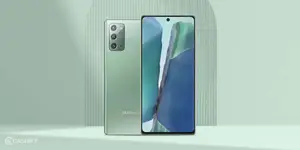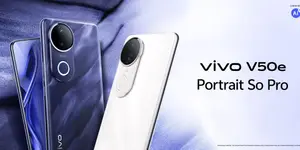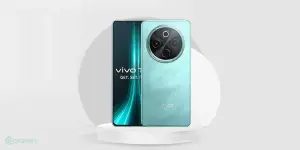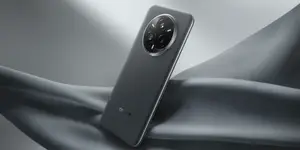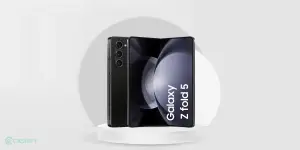Over the past few years, smartphone cameras have become extremely promising. New smartphones these days come with high-resolution cameras capable of shooting videos in 4K and even 8K HDR, however, the one thing missing from these smartphones until recent times was the Bokeh effect produced by the large sensor and lens on a DSLR.
In the past few years, an increased number of smartphones have started coming with a dual-camera setup allowing them to get a perception of depth in a photo and apply a software bokeh to the image.
While this can look great in some cases, it can be a massive failure in some attempts. With further advancements in smartphone cameras, new devices are coming with a dedicated depth sensor to better track the depth in a particular scene and apply the software bokeh accordingly.
These are mainly of two types, either a dedicated ToF (Time of Flight) sensor or a depth-sensing camera. In this article, we check out the top 10 smartphones in the market right now that have a dedicated depth sensor.
Samsung Galaxy S20 Ultra
The Samsung Galaxy S20 Ultra comes with one of the best camera setups in the market right now, the device not only has a 108MP primary sensor but also comes with a 48MP periscope lens that supports 10x hybrid optical zoom or a total of 100x overall zoom.
The smartphone also comes with a 0.3MP TOF 3D sensor with an f/1.0 aperture for depth sensing. A ToF or Time of Flight sensor allows devices to map the image with a 3D depth and offers depth detection for a better bokeh effect.
The smartphone is powered by the Exynos 990 chipset and comes with 16GB of RAM and 512GB internal storage in the highest-end variant. The device is a total powerhouse and offers one of the best optics for both photography and videography, the Samsung Galaxy S20 Ultra is one of the few smartphones with support for 8K HDR video.
- Comes with a ToF sensor for mapping the depth in 3D
- Excellent overall optics with a 108MP primary camera
- Additional 48MP sensor with 10X Hybrid Optical zoom as a periscope
- Support for video recording in 8K HDR
Price: Samsung Galaxy S20(Rs 66,990) Galaxy S20+(Rs 73,990), and Galaxy S20 Ultra (Rs 92,999)
Huawei P30 Pro
Huawei has been known for their camera equipment for a while now, the Huawei P30 Pro comes with a 40MP primary sensor with an f/1.6 aperture. The device also has an 8MP periscope lens with a 5x optical zoom and a 20MP ultra-wide lens. Along with these three primary sensors, the device also boasts a ToF 3D sensor for depth detection. This TOF sensor is similar to the one seen on the Samsung Galaxy S20 Ultra and allows the smartphone to map the image in 3D depth to apply bokeh across the image in the smoothest and most realistic way possible. The device is powered by their HiSilicon Kirin 980 chipset and has up to 8GB RAM and 512GB internal storage.
Also Read: Huawei P30 Pro Review
- Uses a dedicated TOF sensor for detection of depth in 3D while capturing an image
- Comes with a dedicated 5x Optical zoom periscope lens
- Has a high-resolution 40MP primary sensor with an f/1.6 aperture
Price: Rs 56,490
Samsung Galaxy Note 10+
The Samsung Galaxy Note 10+ comes with a quad-camera setup, the primary sensor has a resolution of 12MP, there is an additional 12MP telephoto lens and a 16MP ultra-wide lens. The Note 10 Plus also comes with a 0.3MP TOF 3D depth sensor similar to the Galaxy S20 Ultra smartphone to analyze the depth in 3D while capturing an image or video. This helps the device offer a better bokeh effect on the pictures captured. The smartphone is powered by the Qualcomm Snapdragon 855 chipset or the Exynos 9825 based on the region and has 12GB RAM and 512GB internal storage.
- Comes with a dedicated TOF Sensor for 3D depth detection for photo and video capture
- Good array of primary cameras
- Massive overall specs making it an all-rounder
Price: Rs 79,999
Realme X2 Pro
The Realme X2 Pro comes with a 64MP primary sensor, a 13MP telephoto lens, an 8MP ultra-wide lens and a 2MP dedicated depth sensor with an f/2.4 aperture. This smartphone uses a simple 2MP camera as a depth sensor instead of the more complicated 3D TOF sensor, this camera can only analyze depth in 2D but still works pretty well and improves the depth or bokeh effect in the photos. The smartphone is powered by the Qualcomm Snapdragon 855+ processor and has up to 12GB of RAM and 256GB of internal storage.
Also Read: Realme X2 Pro Review
- Uses a simple 2MP depth sensor without 3D sensing ability
- Comes with a 64MP primary sensor along with the additional telephoto and ultra-wide lens
- Offers unmatched specs for the price point with the top of the notch processor
Price: Rs 27,999
Samsung Galaxy A71
The Samsung Galaxy A71 comes with a 64MP primary camera with an f/1.8 aperture, there is an additional 12MP ultra-wide sensor. The smartphone also has a 5MP macro lens and an additional 5MP depth sensor. This is a traditional depth-sensing camera and uses 2D depth sensing for bokeh effects. The device is powered by the Snapdragon 730 chipset and comes with 8GB RAM and 128GB internal storage.
- Uses a 64MP primary sensor and a 12MP ultra-wide lens for primary captures
- Comes with a dedicated 5MP lens for macro shots allowing you to get close to the objects
- Offers a higher resolution 5MP depth sensor for more details and better bokeh effect
Price: Rs 29,999
Xiaomi Poco X2
The Xiaomi Poco X2 is the second smartphone from the brand following the very successful Poco F1. The device comes with a 64MP primary sensor, there is an additional 8MP ultra-wide lens and a 2MP macro lens along with the 2MP depth sensor. The dedicated macro lens allows users to get up close to the objects while capturing the images and the dedicated 2MP depth sensor allows real-time depth detection for a better bokeh effect in the images. The smartphone is powered by the Qualcomm Snapdragon 730 processor and comes with up to 8GB RAM and 256GB storage.
Also Read: POCO X2 Review
- Comes with a 64MP primary camera for high resolution captures
- Uses an 8MP ultra-wide to get a higher field of view
- The 2MP macro camera allows users to get very close to the object
- The 2MP depth sensor enables better bokeh shots
Price: Rs 16,999
Xiaomi Redmi Note 9 Pro
The Xiaomi Redmi Note 9 Pro has a 48MP primary sensor with an f/1.8 aperture. The secondary lens has an 8MP resolution, there is an additional 5MP macro lens allowing users to get closer to the objects while capturing and a 2MP depth sensor for better bokeh effect in the images.
While the depth sensor on the Xiaomi Redmi Note 9 Pro has the same resolution as the Poco X2, the Redmi Note 9 Pro has a lower resolution primary camera and uses the 48MP sensor instead of the 64MP sensor, however, the Redmi Note 9 Pro uses a higher resolution 5MP macro sensor to enable better macro shots. The smartphone is powered by the Qualcomm Snapdragon 720 processor and has up to 6GB of RAM with 128GB internal storage.
- Comes with high-resolution 48MP primary sensor for high-resolution pictures
- Uses a 5MP macro lens which is higher than most competition allowing higher resolution captures
- Comes with a dedicated 2MP depth sensor for better bokeh shots
Price: Rs 12,999
Also read: Redmi Note 9 Pro Review
Nokia 7.2
The Nokia 7.2 is a little older than the other smartphones on the list but comes with solid optics. The primary camera is a 48MP sensor with an f/1.8 aperture, there are a secondary 8MP ultra-wide lens and a 5MP depth sensor.
The camera in the Nokia 7.2 uses the Carl Zeiss lens for better quality and lesser distortion or reflection. The smartphone is very well designed and comes with good optics. It is powered by the Qualcomm Snapdragon 660 processor and has up to 6GB RAM with 128GB internal storage.
Also Read: Nokia 7.2 Review
- Uses a high-resolution 48MP primary sensor for good quality captures
- Comes with an 8MP ultra-wide sensor for a wider field of view
- Has a higher resolution 5MP depth sensor for a higher resolution capture and better bokeh effect
Price: Rs 17,099
Xiaomi Mi A3
Even the Xiaomi Mi A3 is a little older than the other smartphones in the list, however, it belongs to the famous Mi A series of smartphones that use the Android One platform. The device comes with a 48MP primary sensor with an f/1.8 aperture.
The secondary ultra-wide lens has a resolution of 8MP, the device uses a simple 2MP depth sensor to detect depth and apply the bokeh effect on the images. The smartphone is powered by the Qualcomm Snapdragon 665 chipset and has up to 6GB of RAM and 128GB of internal storage.
Also Read: Xiaomi Mi A3 Review
- Belongs to the Android One Program with stock Android and regular updates
- Uses a 48MP primary sensor with an f/1.8 aperture
- Has an 8MP ultra-wide sensor for a wider field of view
- Uses a simple 2MP depth sensor to offer good quality bokeh shots
Price: Rs 11,999
Infinix S5 Pro
The Infinix S5 Pro is a very simple smartphone and comes with a 48MP primary sensor with an f/1.8 aperture, the secondary sensor on the device is a 2MP depth sensor. There is also a QVGA low light camera sensor for enhancing the low light shots.
The smartphone is powered by the Mediatek MT6765 Helio P35 chipset and has up to 6GB of RAM and 128GB of internal storage. The device is pretty basic but comes with a 2MP depth sensor and supports bokeh effects in the image capture.
- Comes with basic specifications overall
- Uses a 48MP primary sensor with an f/1.8 aperture
- A 2MP depth sensor allows bokeh effects to be realistic
- Also uses a QVGA low light camera sensor to aid in dark situations
Price: Rs 9,999
Also read: Infinix S5 Pro Review
UPDATE: Here are a couple of more phones with fantastic depth sensors.
Realme X3 SuperZoom
With its lowlight capabilities and a dedicated astrophotography mode, Realme X3 SuperZoom is the only smartphone of this kind available in India right now and includes 64MP Samsung GW-1 sensor primary camera with 8MP periscope telephoto camera, f/3.4 maximum aperture, surrounded by 8MP Ultra-wide camera and 2MP macro camera, dual selfie 32MP with f/3.2 aperture and 8MP Ultra wide with f/2.2 aperture front camera.
Even minute details are captured by the main camera during daylight with night pictures tending to lose little details but appear good as well. Right now Realme X3 SuperZoom finds its place among the best camera phones in 30K price bracket with 4200 mAh battery and Octa-core Qualcomm SM8150 Snapdragon 855+ processor.
IQOO 3 5G
Featuring some serious hardware, IQOO is the newest brand entering the Indian market. Powered by the most powerful Qualcomm Snapdragon 865 processor and its top-end model featured with 5G connectivity, IQOO 3 5G offers the best value on paper.
The base variants offer 8GB RAM with 128GB internal storage, a mid-spec variant with 8GB RAM and 256GB internal storage and the top-end version featuring 12GB RAM along with 256 GB internal storage and offering UFS 3.1 storage on all variants with LPDDR5 RAM.
IQOO 3 5G is stuffed with Sony IMX 582 sensor, 48MP f/1.79 aperture primary camera and a 13MP telephoto with f/2.46 aperture capable of 20 digital zoom and 2 optical zoom secondary camera and including other two cameras with 13MP f/2.2 aperture wide-angle camera and a 2MP f/2.4 aperture depth sensor.
Update(January 2021)
Samsung Galaxy S20
Samsung Galaxy S20 Ultra 5G offers an amazing quality of the camera. This phone is a powerhouse in terms of the camera. It possesses amazing low light photography. It has a 108 MP camera, which is also wide-angle. The camera offers a wide-angle shot easily.
You can shoot perfect bokeh shots with this camera. It also carries a depth vision camera on the rear to focus on every detail. This phone is one of its kind. It carries a feature of 100x zoom from which you can click extremely well quality pictures.
It would make a good addition to this list.





